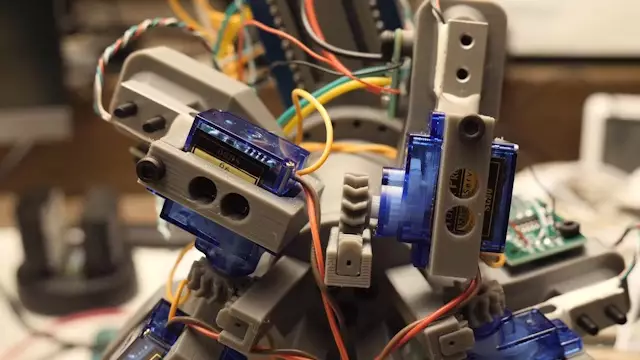Lock picking has long been a symbol of ingenuity, precision, and technical mastery. Whether depicted as a clandestine skill in movies or a sophisticated tool in cybersecurity, the act of manipulating a lock’s mechanisms captures imaginations. As technology advances, the aspiration to automate this craft becomes increasingly tangible. A robotic system that can decipher and manipulate locks using physical principles signifies a leap from traditional lockpicking—once a manual art—to an era where machines can replicate or even surpass human finesse. The allure lies not only in the technical challenge but also in the broader implications for security, automation, and the convergence of robotics with physics.
In recent experiments documented by platforms like YouTube’s Sparks and Code, developers have attempted to create robots that don’t rely solely on brute force but instead utilize sensory feedback based on the underlying physics of lock mechanisms. This approach marks a shift from straightforward, time-consuming methods towards intelligent machines capable of ‘feeling’ their way through a lock’s internal tension. Such innovations aim to reduce the time and effort needed for lock manipulation, potentially revolutionizing fields that depend upon non-destructive entry methods, from locksmithing to security testing.
Physics as the Foundation for Smarter Robotics
The cornerstone of these ambitious projects is leveraging physical principles—especially the detection of tension and resistance within lock components. Traditional lockpicking tools—rakes, hooks, tension wrenches—depend on a human’s tactile sense to feel when pins set or barrels rotate. Translating this sense into a robotic system involves sophisticated sensors or force feedback mechanisms that can gauge minute changes in resistance. For example, a robot may use force sensors in its picks, applying the slightest pressure, then measuring the response to determine pin positions and lock barrel orientation.
This physics-based sensing enables a more nuanced approach than brute-force techniques, which simply try every possible combination blindly. Instead, the robot can adapt, adjusting its actions based on the resistance it perceives, effectively ‘learning’ how to unlock more efficiently. Such adaptability echoes the way expert lock pickers operate in real life, relying on tactile cues to solve complex locks swiftly.
However, implementing this physically sensitive approach poses substantial challenges. The variability of lock designs, the diversity of lock barrel geometries, and the need for precise calibration make the task daunting. Even with high-end sensors, the robot must interpret complex signals, filter noise, and execute delicate manipulations—all in real-time. The current state of the art indicates promise but falls short of being a reliable, universal tool. The experiments by Sparks and Code demonstrate genuine ingenuity, but also highlight the difficulty of translating physics into practical, robust machine behavior.
The Technological Hurdles and Future Prospects
Attempting to develop a fully functioning robotic lock picker with physics-based sensing exposes the multi-layered complexity of real-world robotics. First, the hardware must be capable of extremely fine movements—micro-adjustments that mimic the dexterity of skilled humans. Second, the software must interpret sensor data accurately, making split-second decisions that are context-dependent. Third, the diversity in lock construction, from simple pin tumbler locks to high-security variants, further complicates automation.
Despite progress, current prototypes such as Sparks and Code’s latest efforts face persistent setbacks. Their inability to reliably detect and respond to the nuanced resistance inside more advanced locks exemplifies the steep learning curve. Yet, what’s compelling is their dedicated pursuit, reflecting a broader trend where hobbyist and professional communities push technological boundaries. Each iteration, mistake, and partial success offers valuable lessons, gradually paving the way for more sophisticated systems.
The implications extend beyond lock picking as a mere curiosity. As robots become better at manipulating physical objects based on sensing and physics, their applications become more diverse—ranging from automated security testing to disaster rescue missions. However, ethical concerns around malicious use and security vulnerabilities must accompany these innovations, urging responsibility alongside technical pursuit.
In essence, the journey toward creating a robot that inherently understands the physics of locks and exploits this knowledge marks an exciting frontier. It illuminates both the limitations and the potential of combining sensor-driven feedback with mechanical dexterity. While the dream of a swift, physics-savvy lock manipulation robot remains a work in progress, the ongoing experiments underscore a vital truth: that the marriage of physics and robotics can unlock not just locks, but a new realm of technological possibility.

